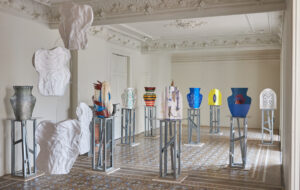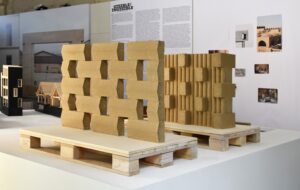|
As a piece of architecture devoid of context, ZHA’s captivating cultural centre in Baku, Azerbaijan, is perhaps the most important building of recent years, but its purpose and values remain unclear, argues Owen Pritchard after a visit The Heydar Aliyev Centre, at the heart of the Azeri capital Baku, has just been announced as the winner of Designs of the Year, the annual competition organised by the Design Museum in London. It is the first time a building has won the prize and its architect, Zaha Hadid, is the first woman to receive the award. The judging panel heaped superlatives on the winner – the architect on the panel, Piers Gough, said: “It is as pure and sexy as Marilyn’s blown skirt, without an ounce of awkward argumentative modernism in its bones. It rather reads like a sweet love letter to Zaha’s homelands.” The building is a distorted cylinder that sags and sweeps around the giant internal spaces, slashed with lights and windows to create a grand, dominating interior. A wholesale rejection of historical gallery and theatre typology, it sets a new benchmark for what public buildings can be and what architects can aspire to create. The structure is captivating. The walls flow to the floors at improbable angles, seemingly defying physics, in soft, majestic curves. There is more than 100,000sq m of indoor space arranged around a 960-seat auditorium and a series of balconies that recede over the 74m-high internal space. When I visited earlier this year, after the 20m-rise of the landscaped plaza to the Welcome Zone of the building, a digital advertising screen greeted me at the entrance, displaying the words: “The building’s dominant white colour, along with symbolising the bright future, also conveys a set of specific messages.” It then flicked to the next screen, an advertisement for a Michael Bolton concert later in the year. The screen broadcast seven or eight more slides, before repeating the banal cycle. What specific (optimistic) messages the building intended to convey was left unexplained. As an object in a landscape, as a piece of architecture devoid of context, the Heydar Aliyev Centre is an important, maybe the most important, building of recent years. It displays mastery of technology and material, all underpinned by the parametric dogma that defines ZHA’s output. Many will regard it as a worthy winner of the Design of the Year award, but the unstated set of values that this building represents should maybe give cause for concern. The pack of journalists I was with, in the largely empty building, were viewing an exhibition of work by state-approved young artists, curated by a relation of the ruling family. The operational purpose of the building remained unclear. One exhibition, of the history of Azerbaijan, had been closed off for the evening; we could only guess what was inside. Every public building takes time to understand what its brief is and how to fulfil it. It’s fair to assume that this is true of the Heydar Aliyev, which has been open for less than two years. But buildings are born of their social, economic and political context. Azerbaijan, the Land of Fire, has so much oil that it bubbles up through the ground. It has a questionable human rights record, a heavily censored press and, in April this year, the Council of Europe reported that “freedom of expression, assembly and association are deteriorating in Azerbaijan”. The purpose of this cultural centre and public space in a country where expression is suppressed remains unclear. Is a symbol of power like the Heydar Aliyev Centre a worthy winner of a design award? Or, looking at the other finalists, is a piece of technology like Peek Vision, which could save the eyesight of many across the world, a better candidate? Is a work like James Bridle’s Drone Shadows a more pertinent and critical comment about the uses of design and technology? Another judge, Kim Colin of Industrial Facility, said, “The jury argued heatedly for and against, and then we finally agreed unanimously that the project deserves our utmost respect. This architecture should make us talk for years to come.” The Heydar Aliyev Centre demonstrates the ability of an architect to create a modern icon, and the conditions that are needed for it to happen. But what about values? Does Zaha Hadid’s Heydar Aliyev Centre deserve the title of Design of the Year? Tell us what you think using the comment box below |
Words Owen Prichard
Images Iwan Baan |
|
|

















